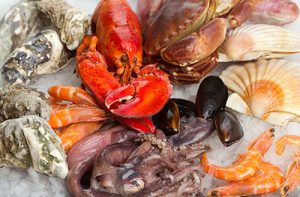Axiostat is the name of a newly product made from 100% natural resource which brings more hopes for stopping bleedings in many medical therappies and even homes. No wonder it will help soldiers in the battle fields and emergency missions.
Technology is being used to upgrade the humble bandage. Research teams all across the world are developing smarter and more effective wound coverings and dressings, bringing together advances in materials, sensors, tissue engineering, and microelectronics. An overview of the smart bandages of the future:
It normally takes over 30 minutes of manual pressure to plug blood loss following an angioplasty. With Axiostat it can be stopped in just four minutes. Axiostat is a wound dressing made of 100% chitosan, a naturally occurring polymer found in shellfish, stops bleeding within minutes of being applied; has been developed by Axio Biosolutions Pvt. Ltd. Chitosan is a natural biomaterial that is modified for medical application. Axiostat is a sponge-like dressing and is a ready-to-use product that can be cut into different sizes to suit the wound. The idea was to create a product that can even be used by someone with no medical knowledge. The company has designed, developed and commercialised products for Emergency (emergency bleeding control, stop haemorrhage), Military (chitosan sponge for quick clot – haemostatic dressing), Vascular (vascular haemostatic dressing for interventional cardiology/radiology) and Dental (dental dressing – stop oral bleeding, protect wound). The company is revolutionising wound care across the world “While it looks like dry sponge, when it comes in contact with blood, Axiostat turns sticky and forms an adhesive layer on the blood vessels. All sides of the product are created equal, so there’s no right or wrong side or a prescribed technique to use the product. You just need to take it out of the packaging and place it on the wound. “Blood (has a) net negative (charge) and the product is highly positive, forming a strong adhesive seal,” says founder Mavely. The medical pad comes in multiple sizes – 5x5cm, 5x8cm, and 8x8cm – and can stay on the wound for upto 48 hours. The dressing can be removed easily using saline water, leaving no residue.
A Smart bandage incorporating nanotechnology into wound dressings has been developed by a research team, including scientists from Australian Universities. The next-generation bandage can alert a patient or clinician to problems with a wound by changing colour, and can automatically release antibiotics contained within polymer capsules. Connected via Bluetooth to a smartphone, sensors in the bandage can alert a doctor if the bandage needs attention. Lead researcher Professor Nico Voelcker said that the technology relied on tiny sensors able to detect telltale signs of infection, without the need to remove the bandage and compromise healing. The sensors are capable of detecting changes in temperature or pH levels, triggering a change of colour to red. They can also automatically release antibiotics from within polymer capsules. Sensors have also been developed to show when a pressure bandage has loosened. The consortium of experts from Melbourne, Monash, NSW, Queensland and SA Universities, has proved the concept with prototypes in small tests, but they need more funding to proceed with large-scale clinical trials.
Scientists in the UK have designed a new intelligent bandage which can detect how well a wound is healing and send a progress report to the doctor. The bandage, which could be trialled within the next 12 months, uses real-time 5G technology to monitor what treatment is needed and also keep track of a patient’s activity levels. It would connect that wound to a 5G infrastructure and that infrastructure through your telephone will also know things about you — where you are, how active you are at any one time. The plaster would help clinicians know the performance of the specific wound at any specific time, who can then tailor the treatment protocol for the individual.
“The intelligent dressing uses nano-technology to sense the state of the wound at any one specific time,” said Marc Clement, chairman of the Swansea University’s Institute of Life Science in the UK, which led the research.
About SHELFISH


















